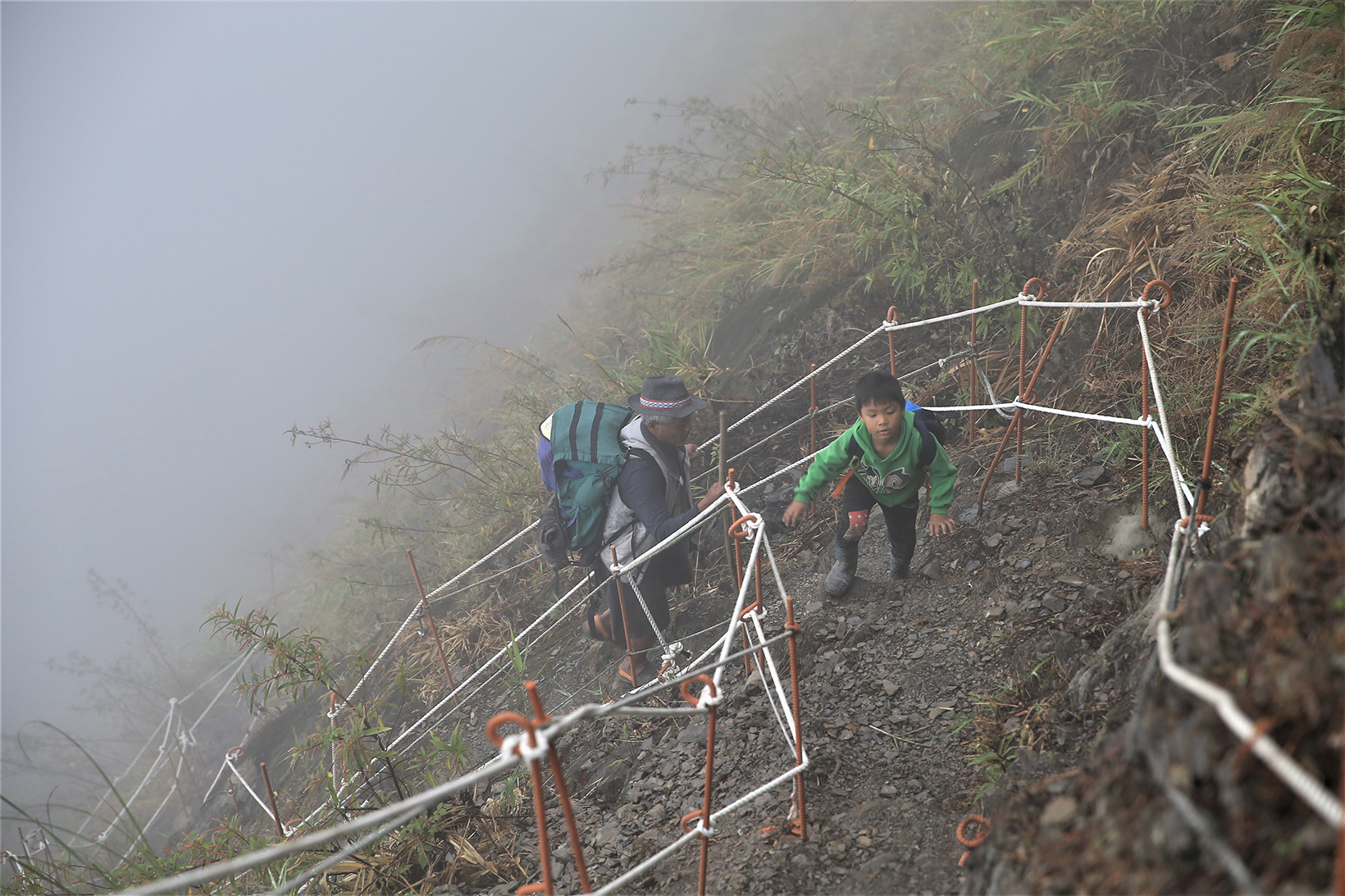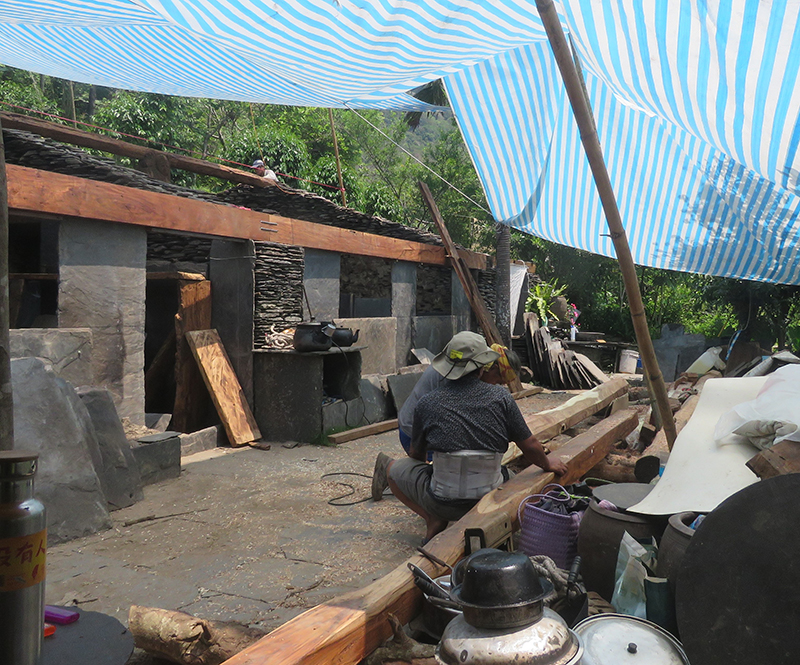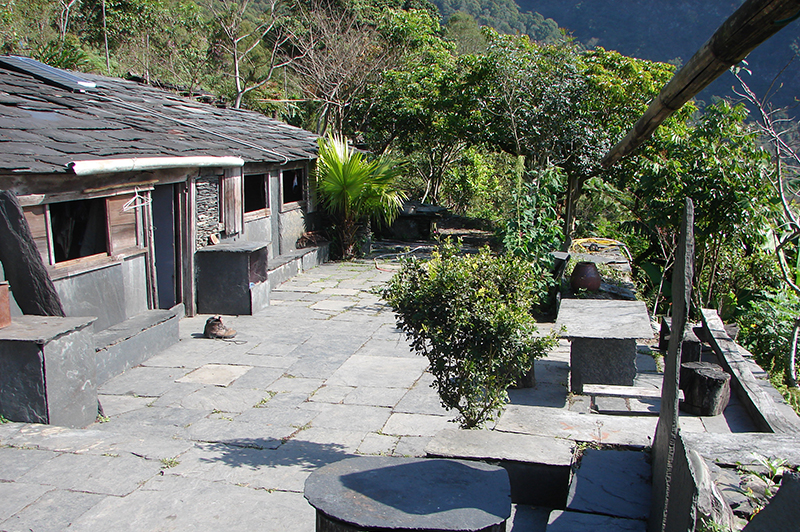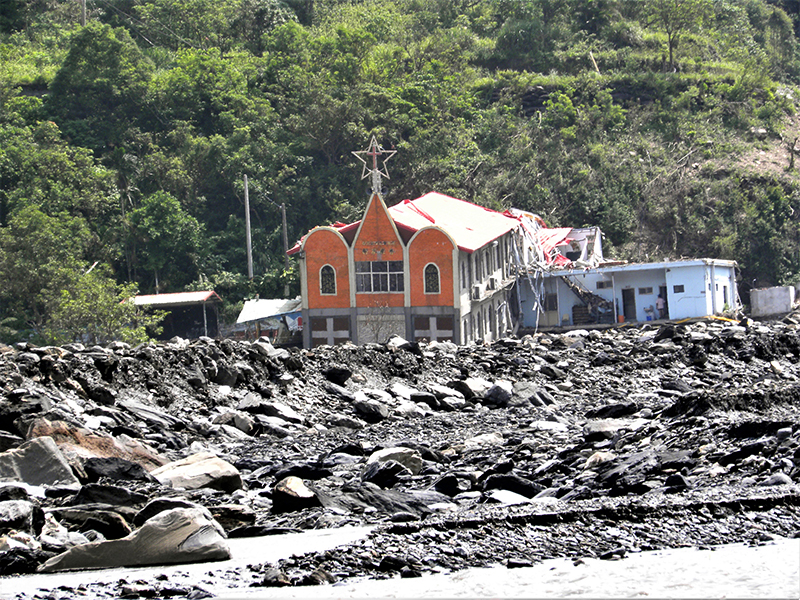“That is our home. It's a tough way back, but we will get there.”
Above: New Kucapungane Village before it was destroyed by Typhoon Morakot.
Even at over 70 years old, when Auvini.Kadreseng talks about old Kucapungane community, his sharp eyes sparkle with life and his strong voice becomes soft with memories. Kucapungane is located on the misty North Dawu Mountain. It is not only the place where Auvini grew up, but also the home which their ancestors had chosen for the generations to come - the home of the Rukai people.
45-year-old Auvini.Kadreseng Decides to
Rebuild His Mountain Stone Slab House
Back in 1979, transportation between Kucapungane and the outside world was very difficult. The community also lacked electricity and other basic infrastructure. In order to let the villagers have easier access to employment, education, medical care, and other daily life necessities, the government relocated the entire community to the banks of South Ailiaobei River at the foot of the mountain, and named it “New Kucapungane Community”.
The relocation happened when Auvini, like many community members of the same age, was studying in the city. He could not believe it when he heard the news. “When we got back to the old community, it was already gone.” he sighed, “my beautiful home, the one I dream about every night, was just...gone.”
Although the community was relocated, for Auvini, home is a place that never changes. One day he will still “go home”. Auvini later found employment in another city, but whenever he came back to New Kucapungane on holidays, he always took the four-hour hike back to the original community location. Once, after paying respects to the ancestors, he spent the night in the mountains. He dreamt of his deceased father clearing up all the weeds in their home garden that night. A surprised Auvini asked in his dream,
“Father? Why are you still here?”
“I'm looking after your home.” His father replied calmly.
After he woke up, the thought of “going home” began to take root in Auvini's mind. Two years later, he quit his city job and returned to the community. Auvini, then 45 years old, decided to rebuild his family's stone slab house. One slab after another, he spent two years rebuilding his childhood “home”. “Our ancestors left us three things: our language, our stone slab houses, and our culture.” Auvini said with a smile, “I cannot save our language alone. As for stone slab houses, I rebuilt our family home, so I guess I did preserve something from the ancestors.”

Auvini.Kadreseng and son trekking back to Old Kucapungane Village (photo / Zhang Dachuan)
Using Words to Record
the Stories of the Ancestors
After he fully restored his family house, Auvini started to write in his mountain home. From “The Legacy of the Clouded Leopard” (雲豹的傳人), “The Mysterious Disappearance” (神祕的消失), to “The Lost Kingdom” (消失的國度), Auvini tells the stories of his ancestors with simple and sincere words, and recalls how the community disappeared due to the relocation and Typhoon Morakot. Auvini meticulously recorded his home surroundings, his people's culture, religious rituals, and myths and legends in his books. He also wrote down thoughts and emotions regarding the loss of their land and connection with their ancestors, and the longing for their original homeland.
His publications gradually raised social awareness about old Kucapungane community, especially after Typhoon Morakot: the community members were forced to relocate to Rinari Community, where they found no farm lands or hunting grounds, and could not even find a proper place to bury their dead. Some community members began to take action to rebuild their mountain homes. “At least our mountain homes would not be abandoned. After our elders pass away, we can still bring their ashes up here and bury them, so that they can find their way back.” Auvini said softly.


Community members working together to repair the stone slab houses.
In 2016, the remaining 163 stone slab houses at old Kucapungane were included on the World Monuments Fund's World Monuments Watch list, making them the second cultural asset in Taiwan to be globally recognized. The Ministry of Culture launched a ten-year restoration project the following year; and in 2019, community members were allowed to apply for funding to repair their own stone slab houses. Auvini and other community members applied for the subsidy and have restored a total of ten stone slab houses (including Auvini's family house he repaired by himself long ago) so far.
Currently Auvini is writing a book of essays on Rukai stone slab houses. With content collected orally from fathers and elders, the book records the importance of stone slab houses in Rukai culture. For Auvini, these actions and processes are just a way for him to find his way home. “We need to let 'people' come home, let life take root there. That is how you can really pass on the culture.”
It is a long way home, and 74-year-old Auvini is still walking the challenging path. “I don't have a mission or goal in mind when I do these things. I don't feel any pain or struggle, either. Because that is my home, that is where my soul is. And I want to go home.”

New Kucapungane Village after Typhoon Morakot. The village was buried under mudslides.




